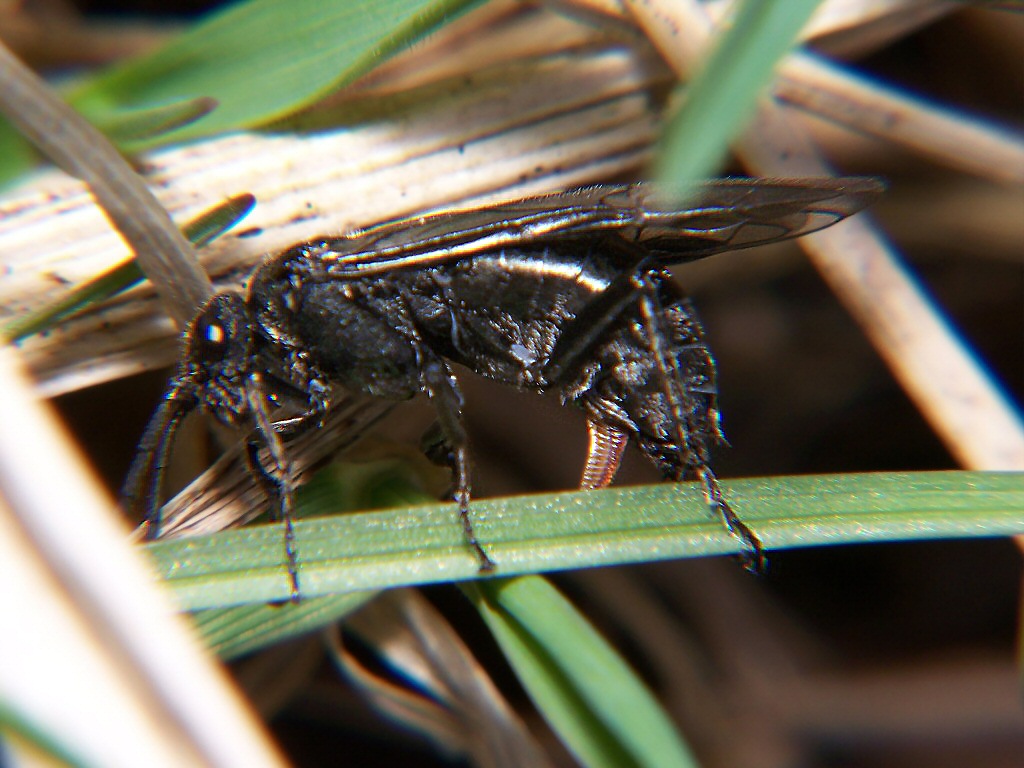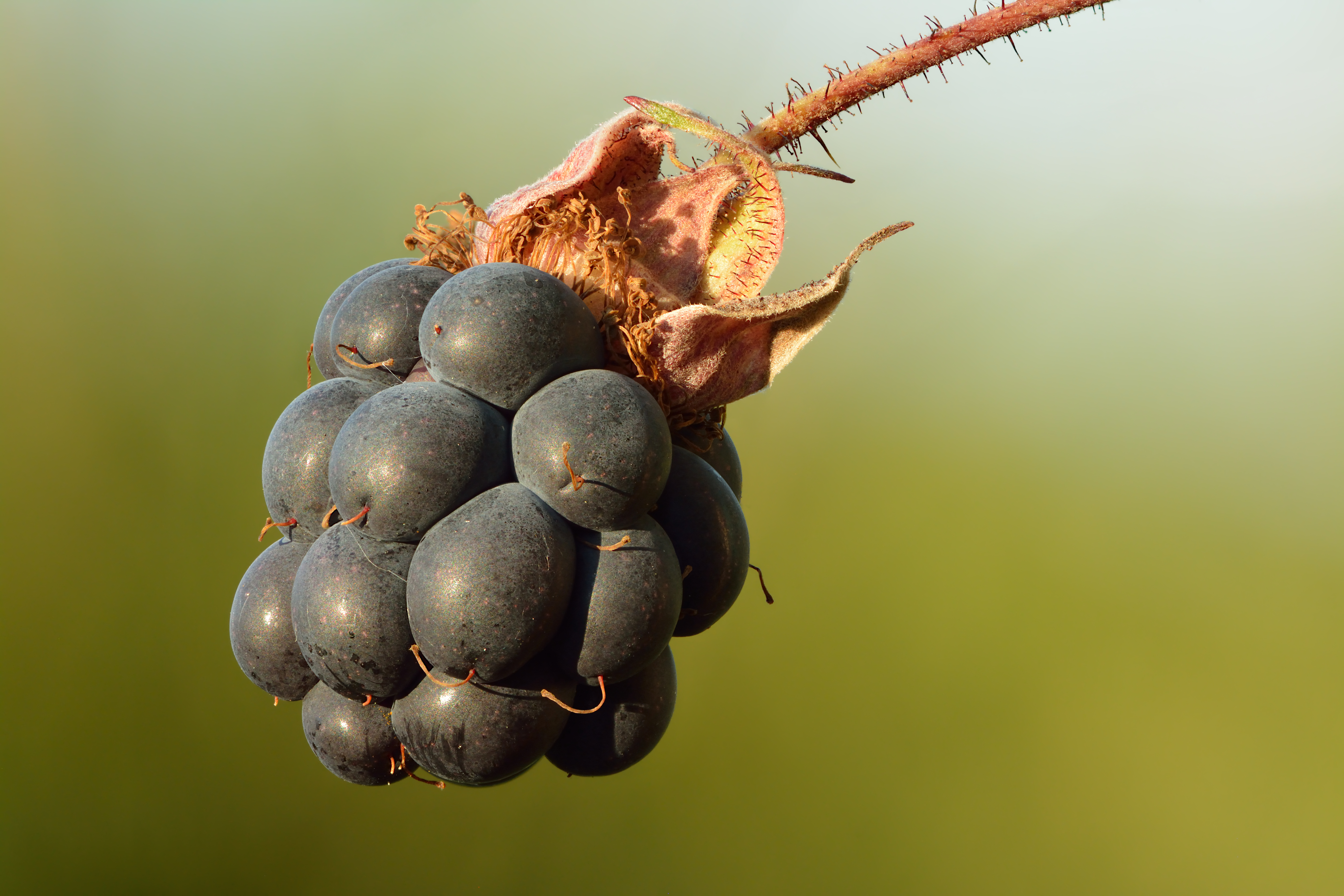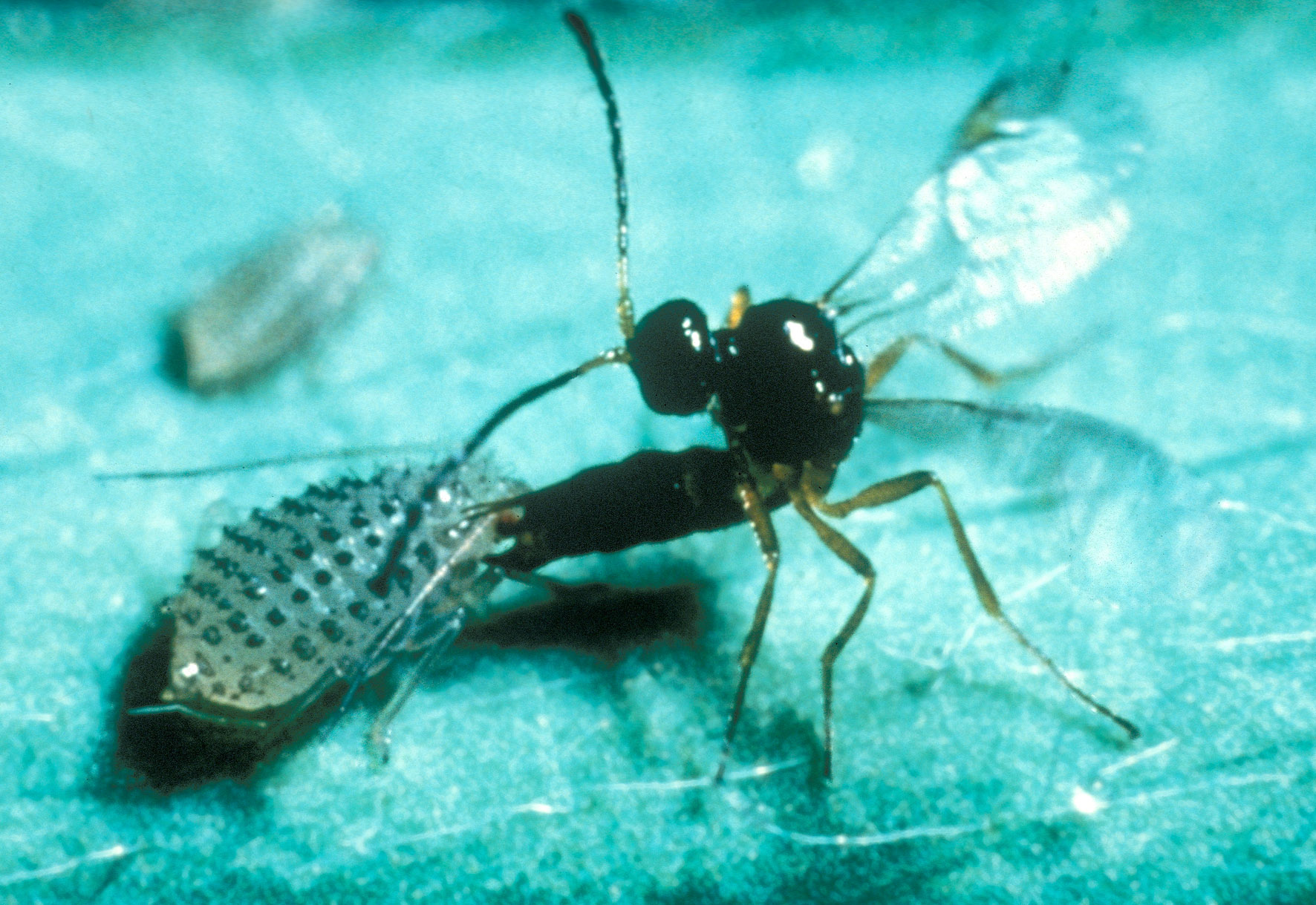|
Cibdela Janthina
''Cibdela janthina'' is a sawfly of the family Argidae. This species originates from Sumatra in South-East Asia but had also been introduced to La Réunion in 2007 for biological pest control of '' Rubus alceifolius'', a Rosaceae species that had become an invasive species. It has a metallic dark-blue colour, the males have a length of approx. 8 mm and the females of 9.5 mm. A parasitoid In evolutionary ecology, a parasitoid is an organism that lives in close association with its host (biology), host at the host's expense, eventually resulting in the death of the host. Parasitoidism is one of six major evolutionarily stable str ... of ''C. janthina'' is '' Proterops borneoensis''.Achterberg &Chenon, 2009. ''The first report of the biology of Proterops borneoensis Szépligeti (Hymenoptera: Braconidae: Ichneutinae), with the description of a new species from China. ''. - Journal of Natural History 2009 Vol. 43 No. 9/12 pp. 619–63abstract/ref> File:Cibdela janthi ... [...More Info...] [...Related Items...] OR: [Wikipedia] [Google] [Baidu] |
Johann Christoph Friedrich Klug
Johann Christoph Friedrich Klug (5 May 1775, in Berlin – 3 February 1856, in Berlin), was a German entomologist. He described the butterflies and some other insects of Egypt, Upper Egypt and Arabia in Christian Gottfried Ehrenberg and Wilhelm Friedrich Hemprich's ''Symbolæ Physicæ'' (1829 in Berlin – 1845). He was professor of medicine and entomology in the University of Berlin (known in the present day as the Humboldt University of Berlin) where he curated the insect collections from 1810 to 1856. At the same time he directed the Botanical Garden in Berlin, Botanic Garden in Berlin which contains his collections. Klug worked mainly on Hymenoptera and Coleoptera. The plant genus ''Klugia'' (now called ''Rhynchoglossum'', Family Gesneriaceae) was named in his honour as well as the butterflies ''Geitoneura klugii'' and ''Heliophisma klugii''. In 1855, he was elected a foreign member of the Royal Swedish Academy of Sciences. Works (Partial List) * Die Blattwespen nach ihren Ga ... [...More Info...] [...Related Items...] OR: [Wikipedia] [Google] [Baidu] |
Sawfly
Sawflies are wasp-like insects that are in the suborder Symphyta within the order Hymenoptera, alongside ants, bees, and wasps. The common name comes from the saw-like appearance of the ovipositor, which the females use to cut into the plants where they lay their eggs. The name is associated especially with the Tenthredinoidea, by far the largest superfamily in the suborder, with about 7,000 known species; in the entire suborder, there are 8,000 described species in more than 800 genera. Symphyta is paraphyletic, consisting of several basal groups within the order Hymenoptera, each one rooted inside the previous group, ending with the Apocrita which are not sawflies. The primary distinction between sawflies and the Apocrita – the ants, bees, and wasps – is that the adults lack a "wasp waist", and instead have a broad connection between the abdomen and the thorax. Some sawflies are Batesian mimics of wasps and bees, and the ovipositor can be mistaken for a stinger. S ... [...More Info...] [...Related Items...] OR: [Wikipedia] [Google] [Baidu] |
Argidae
Argidae, commonly known as the argid sawflies, is a large family of sawflies, containing some 800 species worldwide, primarily in tropical regions. The larvae are phytophagous, and commonly can be found feeding (and often pupating) in groups, though very few attain pest status. Description The family is distinguished from all other Symphyta by the reduction of the antenna to three segments, flagellomeres; the last one is elongated often shaped like a tuning fork in males. Distribution Species of this family are mainly found in the Neotropical region and in sub-Saharan Africa; however, this family is globally distributed. Genera Argidae contains the following genera, split between its two subfamilies: * Arginae ** '' Antargidium'' ** '' Arge'' ** '' Asiarge'' ** '' Brevisceniana'' ** '' Kokujewia'' ** '' Mioarge'' ** '' Pseudarge'' ** '' Scobina'' ** '' Sjoestedtia'' ** '' Spinarge'' ** '' Triarge'' ** '' Zhuhongfuna'' * Sterictiphorinae ** '' Acrogymn ... [...More Info...] [...Related Items...] OR: [Wikipedia] [Google] [Baidu] |
Sumatra
Sumatra () is one of the Sunda Islands of western Indonesia. It is the largest island that is fully within Indonesian territory, as well as the list of islands by area, sixth-largest island in the world at 482,286.55 km2 (182,812 mi.2), including adjacent islands such as the Simeulue Island, Simeulue, Nias Island, Nias, Mentawai Islands, Mentawai, Enggano Island, Enggano, Riau Islands, Bangka Belitung and Krakatoa archipelago. Sumatra is an elongated landmass spanning a diagonal northwest–southeast axis. The Indian Ocean borders the northwest, west, and southwest coasts of Sumatra, with the island chain of Simeulue, Nias, Mentawai Islands, Mentawai, and Enggano off the western coast. In the northeast, the narrow Strait of Malacca separates the island from the Malay Peninsula, which is an extension of the Eurasian continent. In the southeast, the narrow Sunda Strait, containing the Krakatoa archipelago, separates Sumatra from Java. The northern tip of Sumatra is near ... [...More Info...] [...Related Items...] OR: [Wikipedia] [Google] [Baidu] |
Asia
Asia ( , ) is the largest continent in the world by both land area and population. It covers an area of more than 44 million square kilometres, about 30% of Earth's total land area and 8% of Earth's total surface area. The continent, which has long been home to the majority of the human population, was the site of many of the first civilisations. Its 4.7 billion people constitute roughly 60% of the world's population. Asia shares the landmass of Eurasia with Europe, and of Afro-Eurasia with both Europe and Africa. In general terms, it is bounded on the east by the Pacific Ocean, on the south by the Indian Ocean, and on the north by the Arctic Ocean. The border of Asia with Europe is a social constructionism, historical and cultural construct, as there is no clear physical and geographical separation between them. A commonly accepted division places Asia to the east of the Suez Canal separating it from Africa; and to the east of the Turkish straits, the Ural Mountains an ... [...More Info...] [...Related Items...] OR: [Wikipedia] [Google] [Baidu] |
La Réunion
LA most frequently refers to Los Angeles, the second most populous city in the United States of America. La, LA, or L.A. may also refer to: Arts and entertainment Music * La (musical note), or A, the sixth note *"L.A.", a song by Elliott Smith on ''Figure 8'' (album) * ''L.A.'' (EP), by Teddy Thompson *'' L.A. (Light Album)'', a Beach Boys album * "L.A." (Neil Young song), 1973 * The La's, an English rock band * L.A. Reid, a prominent music producer * Yung L.A., a rapper * Lady A, an American country music trio * "L.A." (Amy Macdonald song), 2007 *"La", a song by Australian-Israeli singer-songwriter Old Man River *''La'', a Les Gordon album Other media * l(a, a poem by E. E. Cummings * La (Tarzan), fictional queen of the lost city of Opar (Tarzan) *'' Lá'', later known as Lá Nua, an Irish language newspaper * La7, an Italian television channel *LucasArts, an American video game developer and publisher * Liber Annuus, academic journal Business, organizations, and governm ... [...More Info...] [...Related Items...] OR: [Wikipedia] [Google] [Baidu] |
Biological Pest Control
Biological control or biocontrol is a method of controlling pests, whether pest animals such as insects and mites, weeds, or pathogens affecting animals or plants by using other organisms. It relies on predation, parasitism, herbivory, or other natural mechanisms, but typically also involves an active human management role. It can be an important component of integrated pest management (IPM) programs. There are three basic strategies for biological control: classical (importation), where a natural enemy of a pest is introduced in the hope of achieving control; inductive (augmentation), in which a large population of natural enemies are administered for quick pest control; and inoculative (conservation), in which measures are taken to maintain natural enemies through regular reestablishment. Natural enemies of insects play an important part in limiting the densities of potential pests. Biological control agents such as these include predators, parasitoids, pathogens, and com ... [...More Info...] [...Related Items...] OR: [Wikipedia] [Google] [Baidu] |
Rubus Alceifolius
''Rubus'' is a large and diverse genus of flowering plants in the rose family, Rosaceae, subfamily Rosoideae, most commonly known as brambles. Fruits of various species are known as raspberries, blackberries, dewberries, and bristleberries. It is a diverse genus, with the estimated number of ''Rubus'' species varying from 250 to over 1000, found across all continents except Antarctica. Most of these plants have woody stems with prickles like roses; spines, bristles, and gland-tipped hairs are also common in the genus. The ''Rubus'' fruit, sometimes called a bramble fruit, is an aggregate of drupelets. The term ''cane fruit'' or ''cane berry'' applies to any ''Rubus'' species or hybrid which is commonly grown with supports such as wires or canes, including raspberries, blackberries, and hybrids such as loganberry, boysenberry, marionberry and tayberry. The stems of such plants are also referred to as ''canes''. Description Bramble bushes typically grow as shrubs (though a fe ... [...More Info...] [...Related Items...] OR: [Wikipedia] [Google] [Baidu] |
Rosaceae
Rosaceae (), the rose family, is a family of flowering plants that includes 4,828 known species in 91 genera. The name is derived from the type genus '' Rosa''. The family includes herbs, shrubs, and trees. Most species are deciduous, but some are evergreen. They have a worldwide range but are most diverse in the Northern Hemisphere. Many economically important products come from the Rosaceae, including various edible fruits, such as apples, pears, quinces, apricots, plums, cherries, peaches, raspberries, blackberries, loquats, strawberries, rose hips, hawthorns, and almonds. The family also includes popular ornamental trees and shrubs, such as roses, meadowsweets, rowans, firethorns, and photinias. Among the most species-rich genera in the family are '' Alchemilla'' (270), '' Sorbus'' (260), ''Crataegus'' (260), '' Cotoneaster'' (260), '' Rubus'' (250), and ''Prunus'' (200), which contains the plums, cherries, peaches, apricots, and almonds. However, all of th ... [...More Info...] [...Related Items...] OR: [Wikipedia] [Google] [Baidu] |
Parasitoid
In evolutionary ecology, a parasitoid is an organism that lives in close association with its host (biology), host at the host's expense, eventually resulting in the death of the host. Parasitoidism is one of six major evolutionarily stable strategy, evolutionary strategies within parasitism, distinguished by the fatal prognosis for the host, which makes the strategy close to predation. Among parasitoids, strategies range from living inside the host (''endoparasitism''), allowing it to continue growing before emerging as an adult, to Paralysis, paralysing the host and living outside it (''ectoparasitism''). Hosts can include other parasitoids, resulting in hyperparasitism; in the case of oak galls, up to five levels of parasitism are possible. Some parasitoids Behavior-altering parasite, influence their host's behaviour in ways that favour the propagation of the parasitoid. Parasitoids are found in a variety of Taxon, taxa across the insect superorder Endopterygota, whose compl ... [...More Info...] [...Related Items...] OR: [Wikipedia] [Google] [Baidu] |
Insects Used For Control Of Invasive Plants
Insects (from Latin ') are hexapod invertebrates of the class Insecta. They are the largest group within the arthropod phylum. Insects have a chitinous exoskeleton, a three-part body (head, thorax and abdomen), three pairs of jointed legs, compound eyes, and a pair of antennae. Insects are the most diverse group of animals, with more than a million described species; they represent more than half of all animal species. The insect nervous system consists of a brain and a ventral nerve cord. Most insects reproduce by laying eggs. Insects breathe air through a system of paired openings along their sides, connected to small tubes that take air directly to the tissues. The blood therefore does not carry oxygen; it is only partly contained in vessels, and some circulates in an open hemocoel. Insect vision is mainly through their compound eyes, with additional small ocelli. Many insects can hear, using tympanal organs, which may be on the legs or other parts of the body. The ... [...More Info...] [...Related Items...] OR: [Wikipedia] [Google] [Baidu] |





